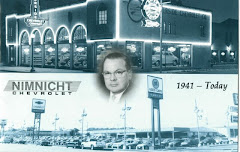Want to know a sure fire way to get pulled over? Drive with
a headlight out and at the very least you’ll find blue lights flashing in your
rearview mirror. Avoid the hassle and expense this can cost you by checking
your headlights periodically and replacing them yourself if needed. Use the
easy to follow steps below as a guide to replacing your headlight bulb.
Step 1 – Located the
bulb holder. Look for a trapezoid-shaped plug that has three wires coming
out of it.
Step 2 – Unhook the
bulb holder. The plug the three wires are attached to is at the base of the
headlight. It is held in place by either a plastic catch, a metal clip, or a
screw cap. If it’s a plastic catch, press the little lever sticking up at the
top of the plug with your thumb while you gently pull the plug out. If you see
a metal clip, simply pull it off. If it’s a screw cap, turn it
counter-clockwise to loosen it.
Step 3 – Remove the
old bulb. With the wiring gone, the bulb should be easily accessible and can
be pulled out.
Step 4 – Insert the
new bulb into place. Hold the bulb by the plug end and slide it into the
back of the headlight. When the bulb is lined up evenly and none of its rubber
gasket is showing, then you will know it is in all the way.
Step 5 – Re-secure
the wiring. Put the wiring back in and give the headlights a test. It’s as
simple as that!
Now remember, these steps are only for most halogen
headlight systems, so if your car has sealed beam headlights these steps won’t
help.




 If you own a Saturn vehicle and you are unsure where you can take your car for a Factory Warranty and Repair, then here's a tip. Take your
If you own a Saturn vehicle and you are unsure where you can take your car for a Factory Warranty and Repair, then here's a tip. Take your 